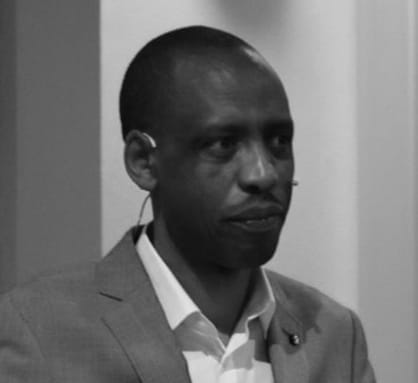Banner: school building at the authors village. Photo: Delphin R. Ntanyoma, March 2019
In July 1993 amid tensions in Masisi, one of the six territories of North Kivu, a friend and I were arrested in Goma city (in the middle of the streets) by a group of Zairean military (Forces Armées Zaïroises- FAZ) deployed to halt violence in the region. Goma, the capital of North Kivu province in the eastern region of the Democratic Republic of the Congo (DRC), is approximately 370-400 kilometers from my native homeland, Minembwe. Minembwe in South Kivu is largely seen as the homeland of the Banyamulenge, an ethnic community I belong to.

Goma, November 2022. Wikipedia Commons
The arrest happened when we were crossing the Goma main road toward Lake Kivu to fetch water. For decades, water has remained a big issue in the city of Goma. With no clues over why we were arrested, a large crowd of civilians passing by started throwing stones (from volcanoes) at us. As far as I remember ― the only crime was our physical appearance ― the military and the crowd chanted “Rwandans”. In 1992-1993, conflict in Masisi and across North Kivu revolved around “natives” and those portrayed as “non-natives or immigrants”. After almost two hours of such uncertain fate, we barely survived the stoning when military soldiers were ordered to get ready to embark vehicles towards Masisi.
Violence has many causes and motivations. However, the sense of belonging or not to DRC is one of the main and persistent drivers of violent conflicts in Eastern DRC, North Kivu, South Kivu, and Ituri. In October 1971, my grandpa was killed by Simba rebels in Fizi territory (Ngandja localities) because he and members of my community did not deserve to live in Fizi/DRC. My grandpa could be among the first families who lived in Ngandja localities. Since then, my family and members of my community cannot live in Ngandja and many other localities where they were forced to flee from.

Destruction of villages and settlements after the 2019 events that led to the ravaging of more than 400 villages.
The village where my parents settled after fleeing Ngadja was completely burnt to ashes on 16 June 2019. It is estimated that more than 2000 civilians were recently killed, 400 villages burnt to ashes, and approximately 450.000 cows were slaughtered by militias supported by the Congolese national army, foreign armies, and armed groups. Such a huge destruction is justified by the fact that the members of the Banyamulenge community are not entitled to live in DRC.
“Under the Shadow of Violence: Are the Banyamulenge Experiencing a Slow Genocide?” examines the systematic violence and marginalization faced by the Banyamulenge community. The assessment can be applied to other ethnic minorities in Eastern DRC and worldwide. Because of colonial legacies and misrepresentations, members of this community are categorized as “foreigners and invaders”. They have been targeted by state actors, militias, and local and foreign armed groups. Across time and territories, violence against the Banyamulenge has led to forced displacement, destruction of their economy and livelihoods, and widespread killings. Violence uses indirect methods of elimination such as impoverishment, starvation, and cultural erasure. For roughly five decades, violence has resorted to a similar modus operandi: men and boys are targeted first, and women and girls are killed after being sexually abused or threatened to be allotted among perpetrators.

The level of destruction of villages and settlements. Before and after. The second photo is the scene following the 2019 destruction with more than 400 villages burnt to ashes.
Last weekend (25-27/01/2025), Goma was captured by a rebel group known as M23 (Mouvement du 23 Mars). The Eastern DRC has more than 120 armed groups whose majority claims are to expel those considered as “non-natives”. The Eastern DRC is currently among the first or the second largest humanitarian crises in Africa with 7 million internally displaced people. This article suggests that complex violent settings can easily overshadow unique experiences and slow genocide.
Read the journal article –
Delphin Rukumbuzi Ntanyoma

Delphin Rukumbuzi Ntanyoma
Delphin Rukumbuzi Ntanyoma is a visiting researcher affiliated with the University of Leeds/United Kingdom. He holds a PhD degree in Economics of Peace and Conflict from the Institute of Social Studies part of the Erasmus Rotterdam University (Netherlands). His research and interest focus on Micro-level Analysis of Violent Conflict in North Kivu and South Kivu/the Democratic Republic of Congo (DRC). Following life trajectories and a comparative approach, his research records and analyses ex-combatants versus civilians, social groups, and ethnic communities’ motivations to engage and disengage in violent conflicts. Delphin is interested in understanding the link between colonialism, violence targeting ethnic minorities in Eastern DRC, and genocide. Delphin is the author of “Behind the Scenes of ‘Banyamulenge Military’”; Under the Shadow of Violence; Radio Okapi between Media and Conflict; “Contested-Native Researcher”; co-author of “Expressive Violence and the slow genocide of the Banyamulenge of South Kivu” and others online articles. He runs an online Blog (The Eastern Congo Tribune: www.easterncongotribune.com) and is active on social media (Twitter).

